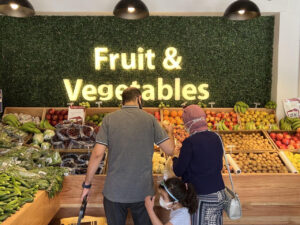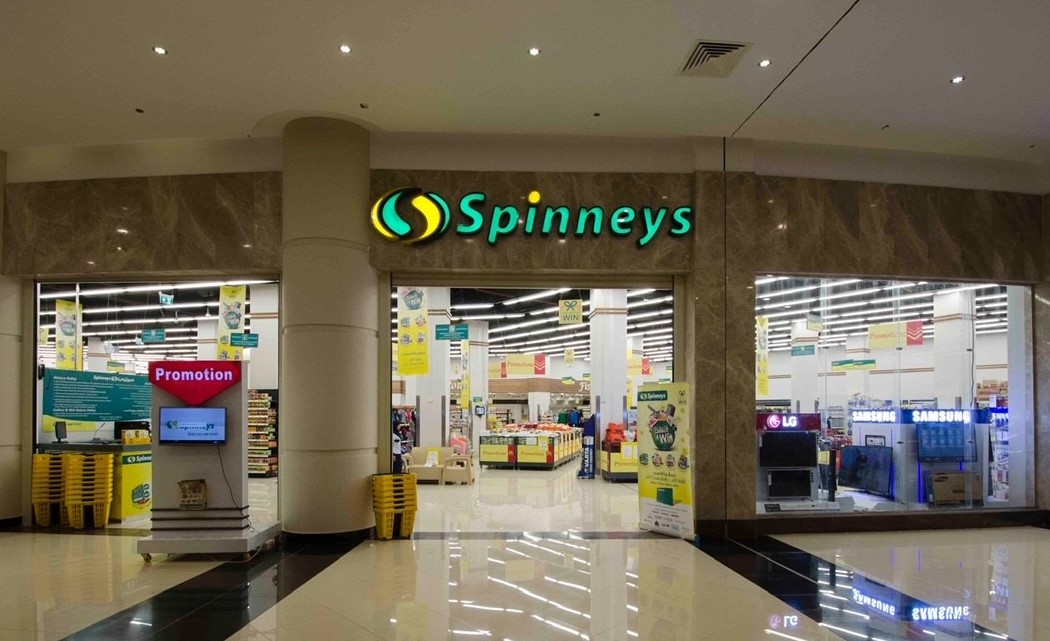This year should be an intriguing year for retail as the sector shakes off obstacles of the previous two years and takes a big leap toward what future shopping will look like, with new technology paving the way for a more inviting online experience.
Brands are rethinking their strategies quickly, blending their presence both online and offline by leveraging an established approach — omnichannel. Adopting an omnichannel strategy requires creating a coordinated, seamless shopping experience across multiple channels, and re-envisioning the role of physical stores in the process.
Spinneys Egypt is a successful case in point, bringing their products to consumers the way they need them, even during challenging inflationary pressures. In a one-on-one interview, CEO Mohanad Adly of Spinneys Egypt talks about current consumer behavior, the market outlook and his company’s investment plans.

How do you view the current performance of the grocery retail sector in regard to investment and demand?
The grocery sector in Egypt is quite substantial in size, but largely underdeveloped and fragmented. Organized retail represents only 25% of the market, with the remainder dominated by smaller mom-and-pop stores and traditional souks. Some may view this as a weakness, but it also represents a huge opportunity for local, regional and multinational retailers to invest in our local market.
The grocery retail market in Egypt is estimated at more than EGP 900 billion, and it continues to increase with the overall growth of the population, which currently stands at approximately 105 million. So Egypt is by far the biggest market by population in the MENA region, and everyone has to eat and drink. This combination of a big consumer market and an underdeveloped retail sector makes Egypt one of the most lucrative markets for retail investment in the region, in spite of the operational challenges retailers may sometimes face.
What is Spinneys’ competitive edge?
One of our important differentiators is our ability to operate multiple store formats. Our store portfolio includes both hypermarkets and supermarkets with a presence in eight governorates across Egypt. Most of the other retailers operate either hypermarkets or supermarkets, while we operate both and this allows for greater adaptability to local market needs and faster expansion. More recently, we also introduced online shopping, which has become our fastest-growing revenue channel over the past two years. Another area of strength is a wide and diverse Spinneys-branded range of products in all three of our main categories: fresh food, fast-moving consumer goods and general merchandise. Our Spinneys range provides customers with high-quality products at more affordable prices than general market brands. One of our key differentiators also is a very popular loyalty program among our customers. The scheme allows Spinneys customers to earn and redeem points with every purchase, whether in a store or online. We also provide loyalty club members with exclusive offers and discounts in addition to the regular offers available for all other customers.
What are the general challenges the retail industry is going through?
A longstanding obstacle facing all retail investors in the Egyptian market is red tape. Laws governing the industry are, unfortunately, excessive and redundant. As a result, some regional and multinational retailers have exited the market in the past. Others that still have a presence find it difficult to grow because of the obstructive bureaucracy they are confronted with. The government has made some efforts recently to reform laws and institutions governing retail in an attempt to encourage more investment in the sector. I believe it’s a step in the right direction, but more improvement is still needed for the investment process to be as efficient as it is in some of the more developed markets in the region.
What are some significant challenges Spinneys is currently facing?
We have a very ambitious expansion plan for the Egyptian market. We want to introduce the Spinneys shopping experience to as many new geographic locations as we possibly can to be closer to our customers. So the main challenge for us is an internal one that we have taken upon ourselves. We have done well to expand our store network nationally since the launch of our first store in Cairo in 2006, but we want to grow at an even faster pace over the next three years. We recognize the importance of growing profitably. So it’s not just about adding new stores, but we also have to be selective in the locations we choose and the terms we agree to. All our existing stores create value and we want to keep it that way as we expand. Our team, therefore, has to work hard to screen and select prime location stores in the geographic areas we’ve identified for expansion and be able to negotiate reasonable commercial terms with landlords.

How has consumption changed since the pandemic?
We saw an accelerated shift to e-commerce with the onset of the pandemic and the ensuing lockdowns that were imposed. Online shopping was already becoming increasingly popular before 2020, but the pandemic brought exponential growth in e-commerce activity. Delivery has been our fastest-growing sales channel over the past two years and the ramp-up continues even after life has now returned to normal. In terms of consumption, consumers initially resorted to stocking up on essential items at the start of the pandemic as they feared supplies could be disrupted. As time passed, they gradually went back to normal consumption levels, but the focus remained on essential groceries and hygiene-related products like sanitizers and face masks. However, the biggest change in buying behavior was felt in the general merchandise category, as consumers did not spend on high ticket items like electronics and heavy household products.
How do you think consumption will change given the recent surge in prices?
As prices increase, consumers naturally tend to reduce consumption. But they also change their shopping behavior. Consumers are becoming more price-driven in their choices. Promotions are more popular now than they have been traditionally, and discounts represent a bigger share of overall sales than they did before inflation accelerated. Generally speaking, retailers tend to favor reasonable inflation levels because it usually means there’s healthy demand. However, when it reaches double-digit levels like we saw in March, it adversely affects consumer buying power. This is unfortunately the case right now. The recent surge in prices is caused by a rise in production and transportation costs and supply chain bottlenecks, rather than strong consumer demand.
How might Spinneys’ strategy change?
We are listening to our customers carefully and trying to identify their changing needs. We also are stepping up our promotional activities with vendor partners in an effort to try to present our customers with more affordable choices. Our mission is to always try to meet and exceed our customers’ expectations, and we recognize that challenging times like these are when consumers will be looking for our support more than at any other time.
Spinneys produces many original products. How did the increase in commodity prices affect your production?
As I mentioned earlier, our own label products are priced more competitively than mainstream brands. The price gap between Spinneys products and generic brands is usually no less than 20% to 25% in any given category. Sometimes our own products would be more than 40% lower than market-leading brands, which is a huge plus at times of high inflation. Of course, like everyone else we are affected by the increase in production and transportation costs, and some of that increase still has to be passed on to customers. However, the general strategy remains that Spinneys-branded products have to be more affordable than any other brand.
Spinneys’ branches are mostly in major cities. Do you see potential in expanding to smaller ones?
We already operate stores in several smaller cities. Currently, we have a store presence in eight different governorates/cities in Egypt including Cairo, Giza, Alexandria, Hurghada, Tanta, the North Coast, Minya and Sadat City. Our plan is to continue to expand our network of stores nationally wherever there is demand, and we will not be restricted to only major cities. In many cases, prospective stores in the smaller cities are just as commercially viable as ones in the big cities because the areas are densely populated and underserved. It also is true that commercial real estate in provincial areas is much cheaper than in major cities, and this can make the business case for a new store more compelling.
What are your investment plans? Are they affected by global inflationary pressures?
Our investment plans are long-term, and we recognize that whatever economic challenges facing the market now can only be short-term. So our investment plans are largely unchanged, and our commitment to the Egyptian market is steadfast. We will continue to invest not only in physical store expansion but also in technology and innovation to keep up with the ever-changing market trends. We already opened two new stores this year, and we have three more stores currently under construction. Our next planned store opening will be in Nasr City before the end of Ramadan, and two other stores will open before the end of June. One of them will be in New Alamein, and this will mark our second store opening on the North Coast after the successful launch and operation of our Rivette mall store three years ago.
Will this period influence your marketing efforts?
Our marketing campaigns are always designed with our customers in mind. As we try to identify our customers’ evolving needs in changing times, we always customize our campaigns accordingly. Overall, we usually step up our marketing efforts during challenging times to try to deliver the message to customers that we understand their concerns and are here for them in their time of need. Our focus these days is to highlight the local alternatives to some of the items that are no longer available due to the recently imposed import restrictions.
How can the government spur further investment in the retail sector?
The demand for grocery retail is there, and the market size is huge compared to other MENA markets. So the investment case for local and international retailers will always be quite compelling. All the government needs to do is iron out some of the obstacles facing retailers when they decide to invest. Cutting red tape is key, and moving to a one-stop approach for the licensing of new stores will definitely help spur future investments.
How do you compare the performance of the retail industry in Egypt versus neighboring countries?
The GCC markets have a relatively developed retail sector compared to the rest of the MENA region. The sector is more organized, and modern trade commands a much bigger share of the overall grocery market than we have here locally. Consumer buying power is also stronger in the GCC, but our main advantage is that we have a much bigger population here in Egypt.







